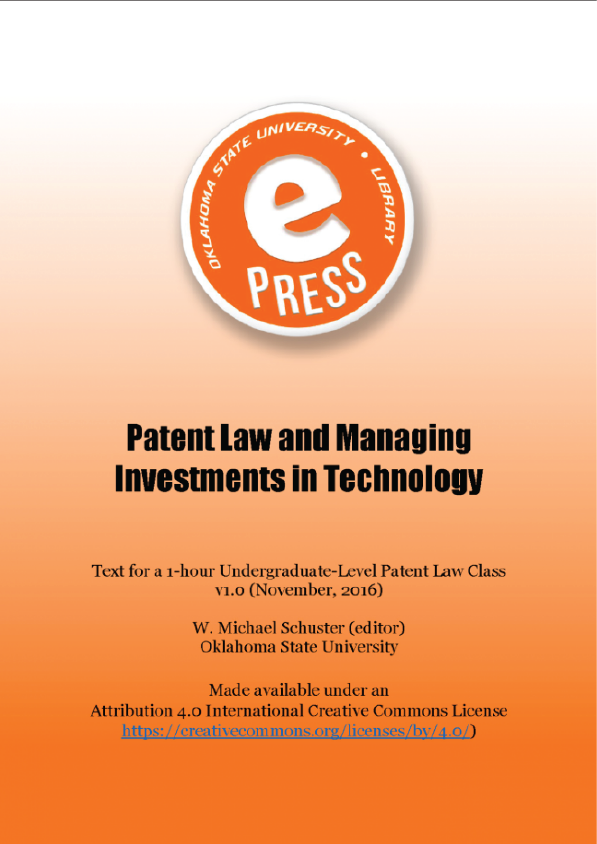Some people confuse patents, copyrights, and trademarks. Although there may be similarities among these kinds of intellectual property protection, they are different and serve different purposes.
1. Excerpt from General Information Concerning Patents, from the US Patent and Trademark Office, http://www.uspto.gov/sites/default/files/inventors/ edu-inf/BasicPatentGuide.pdf This is a United States government work. It is not subject to copyright in the United States and there are no copyright restrictions on reproduction, derivative works, distribution, performance, or display of the work. See 17 U.S. Code § 105; U.S. Government Works, https://www.usa.gov/ government-works. It is requested that in any subsequent use the United States Patent and Trademark Office (USPTO) be given appropriate acknowledgement (e.g., “Source: United States Patent and Trademark Office, www.uspto.gov”). The USPTO reserves the right to assert copyright protection internationally.
1. What is a Patent?
A patent for an invention is the grant of a property right to the inventor, issued by the United States Patent and Trademark Office (USPTO). Generally, the term of a new patent is 20 years from the date on which the application for the patent was filed in the United States or, in special cases, from the date an earlier, related application was filed, subject to the payment of maintenance fees. U.S. patent grants are effective only within the United States, U.S. territories, and U.S. possessions. Under certain circumstances, patent term extensions or adjustments may be available. The right conferred by the patent grant is, in the language of the statute and of the grant itself, “the right to exclude others from making, using, offering for sale, or selling” the invention in the United States or “importing” the invention into the United States. What is granted is not the right to make, use, offer for sale, sell, or import, but the right to exclude others from making, using, offering for sale, selling, or importing the invention. Once a patent is issued, the patentee must enforce the patent without aid of the USPTO.
2. What Is a Trademark or Servicemark?
A trademark is a word, name, symbol, or device that is used in trade with goods to indicate the source of the goods and to distinguish them from the goods of others. A servicemark is the same as a trademark except that it identifies and distinguishes the source of a service rather than a product. The terms “trademark” and “mark” are commonly used to refer to both trademarks and servicemarks. As an example, the Nike Swoosh logo is a trademark identifying goods manufactured by the company. To the extent FedEx provides a service (shipping packages), anything used to identify the company is servicemark.
Trademark rights may be used to prevent others from using a confusingly similar mark (e.g., same mark in the same industry), but not to prevent others from making the same goods or from selling the same goods or services under a clearly different mark. Trademarks used in interstate or foreign commerce may be registered with the USPTO. The registration procedure for trademarks and general information concerning trademarks can be found in a government document entitled: “Basic Facts about Trademarks” (http://www.uspto.gov/trademarks/basics/ Basic_Facts_Trademarks.jsp)











